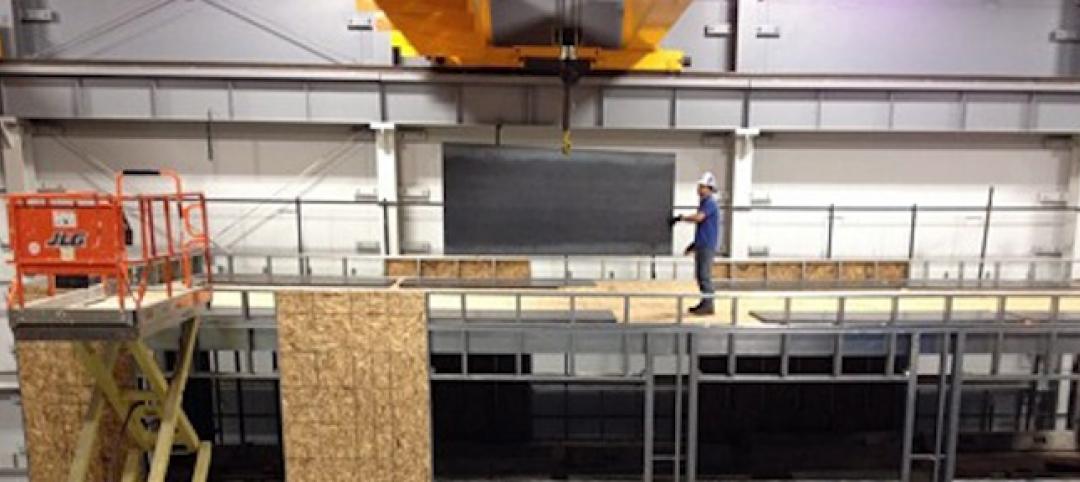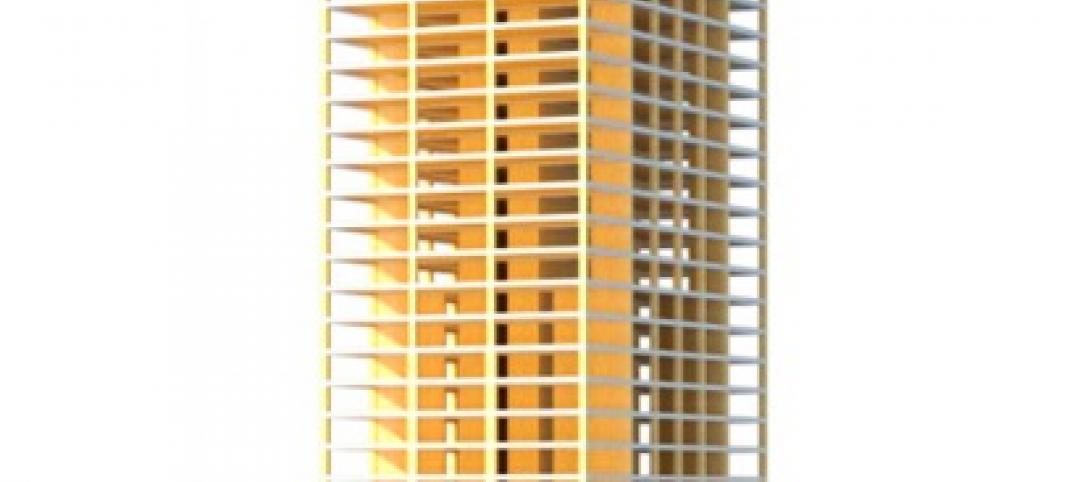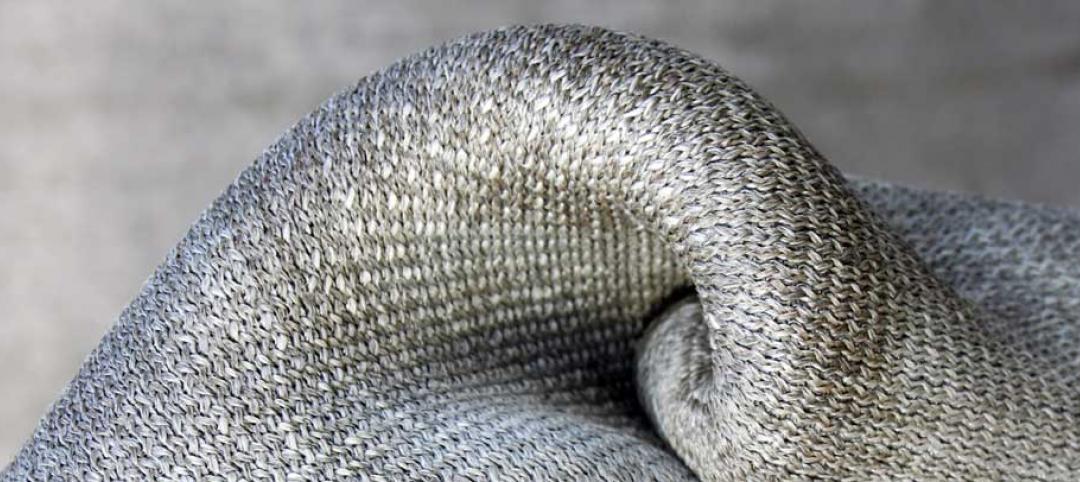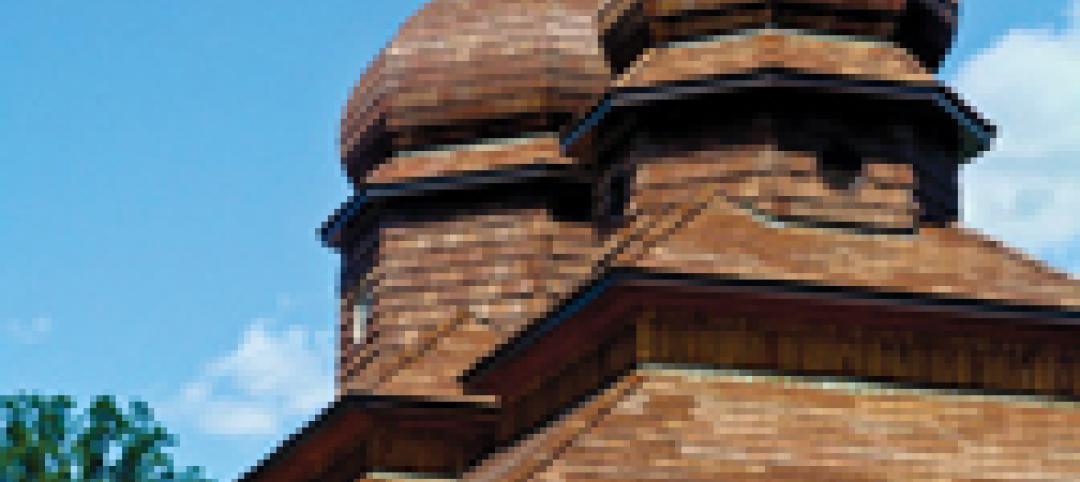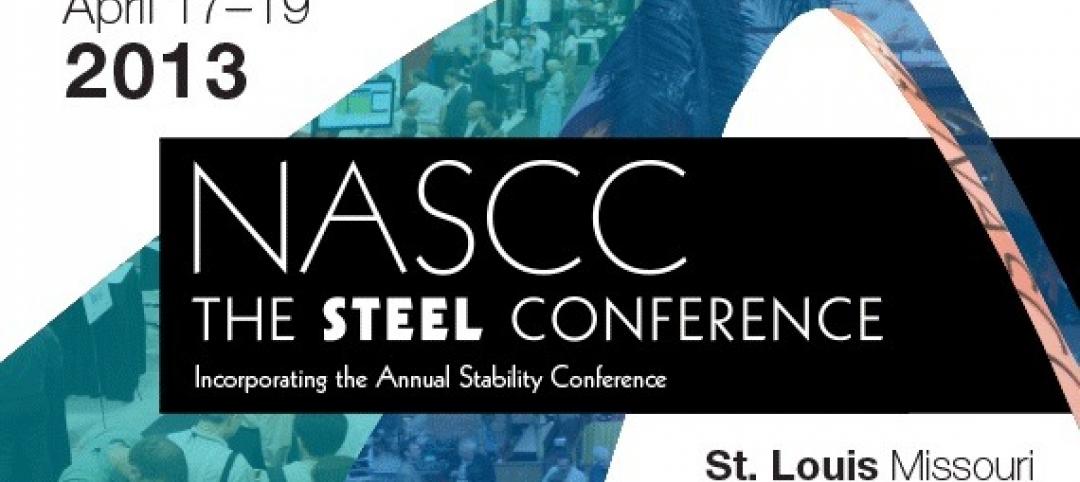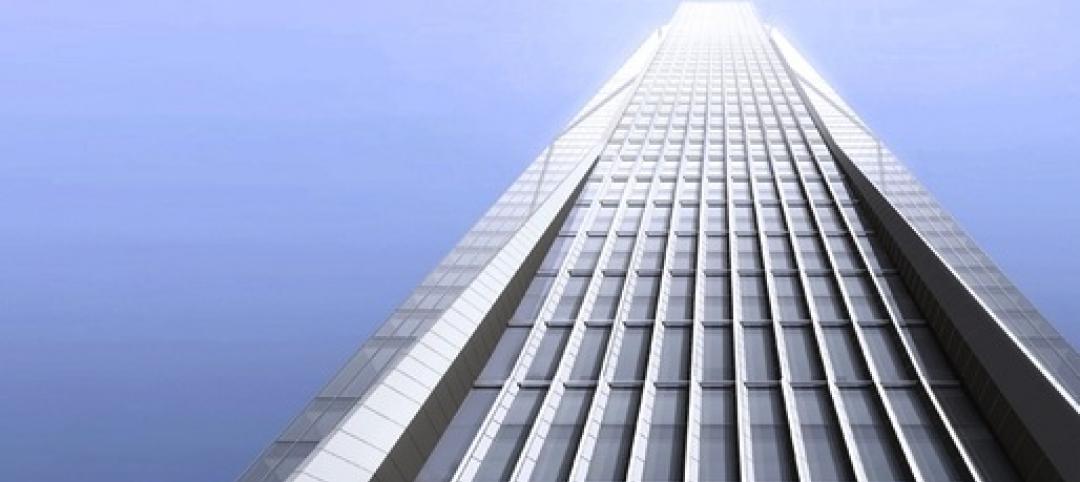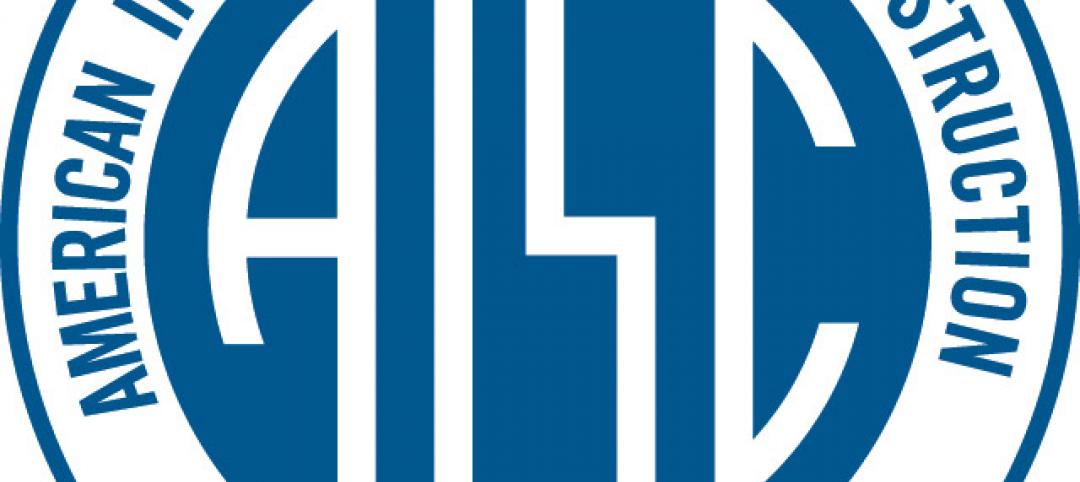One Vanderbilt, a recently completed, state-of-the-art office tower in New York City, is home to several leading finance, banking, law and real estate firms, including SL Green Realty Corp., which developed the building in partnership with Hines and the National Pension Service of Korea. Designed by architects at the acclaimed Kohn Pedersen Fox, the building’s elegant form is composed of four nested, prismatic volumes that taper as they rise and terminate at different heights. Capped by a 128-foot spire, the building reaches a height of 1,401 feet, making it the tallest office building in Midtown Manhattan and the fourth-tallest building anywhere in the city.
The Challenge
The simplicity of the external form belies the complexity of the structure behind it, especially on the upper floors, where the individual prismatic volumes diverge and their overlapping becomes more pronounced. Supporting the ins and outs of the curtain wall — a combination of vision glass and terra-cotta panels — would be enough of a challenge for structural engineering consultant Severud Associates. However, as with any tall building (especially supertalls), the top of the building also had to house the mechanical equipment designed by MEP consultant Jaros, Baum &Bolles, as well as elevator machine rooms, façade maintenance equipment and a tuned mass damper. After everything else was accounted for, there wasn’t much room left over for framing.
Lateral bracing, in particular, could not be accommodated. Nor could bracing be provided by floor diaphragms, which for the most part do not occur immediately behind the curtain wall. Instead, engineers needed to rely on structural members that would be unbraced for their entire length — up to 40 feet — while carrying a combination of axial loads, torsional loads and bi-axial bending loads. Further, the members would have to be interconnected to form an independently stable space frame cantilevering vertically from the main roof of the building.
Marrying Engineering and Aesthetics
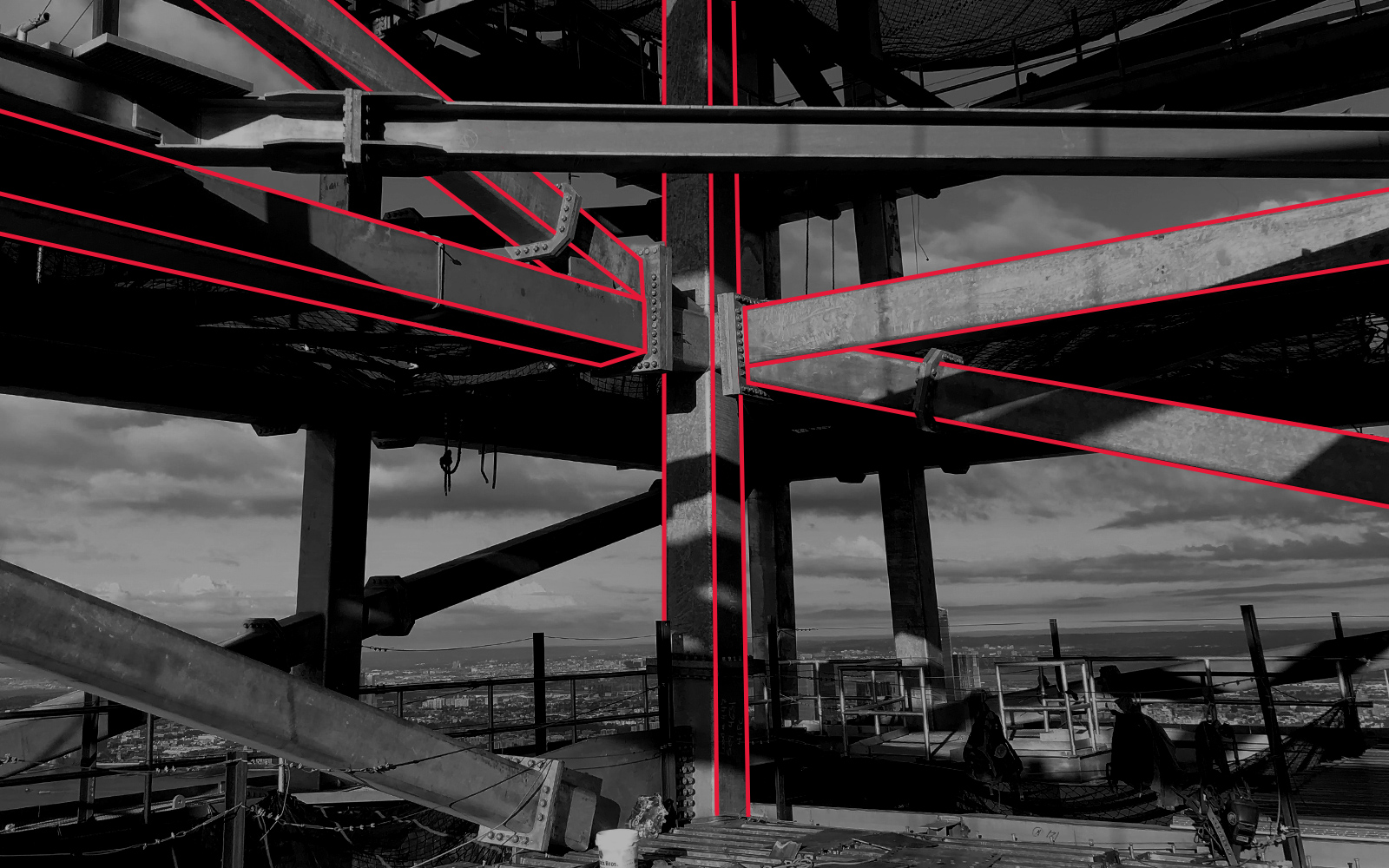 Photo credit: Severud Associates
Photo credit: Severud Associates
Working with the architects, engineers devised a system of concentrically braced frames immediately behind the curtain wall. The framing between the main roof on Level 60 and Intermediate Level 66.1 creates two C-shaped screens, one facing east and one facing west, that together came to be known as the Crown. Architecturally, this is the top of the middle two prismatic forms. At the center of the building, nested within the Crown and rising from Level 64 to Level 68, is a square macro-tube that designers called the Snorkel. Architecturally, this is the top of the highest prismatic form (the lowest prismatic form terminates just above the main roof).
The architects decided to embrace the diagonal members rather than conceal them, expressing their presence in the curtain wall design. Within the east half of the Crown, aluminum accent strips follow the diagonals while terra-cotta spandrel panels at the horizontals create a transition between the typical floors below and the formal top of the building. On the west side of the Crown, the terra-cotta spandrel panels are replaced by aluminum accent strips, and aluminum panels occur at the diagonals of the Snorkel to further distinguish the individual forms and direct the eye upward to the base of the spire. Despite the aluminum panels, most of the structural framing can be seen through the curtain wall. The engineers would have to select framing sections that would reinforce the architect’s desired aesthetic.
Atlas Tube Delivers
Hollow structural sections — HSS — were a clear choice. Based on the inherent stability of their closed cross sections, HSS are rarely governed by lateral-torsional buckling. This maximizes their potential capacity in bending, even for sections with large aspect ratios. And with a minimum yield strength of 50 ksi, that potential capacity can be usefully high. Even so, analysis determined that the vertical and horizontal elements would need to be 22" square (HSS 22" x 22"), while the diagonals would need to be 18" square (HSS 18" x 18"). In the steel industry, these are considered “Jumbo HSS.”
Supporting Possibilities With Domestic Manufacturing

During One Vanderbilt’s construction, the only way to get Jumbo HSS sizes was by sourcing from overseas manufacturers, leading to potential headaches from long lead times and schedule overruns. However, Atlas Tube’s relationship with Japanese steel producer NSMP provided a path to bring these large HSS to North America and make this project successful.
Fortunately for future projects, overseas shipping problems with Jumbo HSS are a thing of the past — with the opening of Atlas Tube’s new mill in Blytheville, Arkansas, the world’s largest HSS are rolled right here in North America. That means sizes up to 22" square and walls up to 1" thick, all available with the shortest lead times in the industry.
Planning for Connections
There were other considerations in the decision to use HSS at One Vanderbilt. Tubular sections lend themselves to shop-welded connections, which are relatively easy to fabricate and visually unobtrusive. The architects permitted field-bolted end-plate splice connections, and this greatly facilitated erection. The vertical members were detailed with stubs for the horizontal and diagonal members. These, in turn, were fabricated as straight pieces with square connections at each end. Tubes also work well in locations that are exposed to weather — except for their tops, there are no horizontal surfaces on which rain, snow or ice can accumulate. All of the HSS framing and connections were galvanized to prevent corrosion.
Using Jumbo HSS sections at the top of One Vanderbilt realized the architect’s vision for the building in an efficient, erectable and enduring manner; accommodated all the equipment that needed to occupy the upper spaces; and contributed to One Vanderbilt’s successful opening in September 2020.
About Atlas Tube
Atlas Tube, a division of Zekelman Industries, produces a wide range of steel tubular products and is the leading provider of hollow structural sections (HSS) in North America. Other offerings include HSS Design Tools and straight-seam electric resistance weld (ERW) pipe piling.
Get answers with Atlas.
For more information, call 800.733.5683 or visit atlastube.com
Project Team
Owner and Developer: SL Green Realty Corp.
Development Partners: Hines and the National Pension Service of Korea
Development Manager: Hines
Architect: Kohn Pedersen Fox
Interiors Architect: Gensler
Structural Engineering Consultant: Severud Associates
MEP Consultant: Jaros, Baum &Bolles
Geotechnical Consultant: Langan
Wind Tunnel / Microclimate Consultant: RWDI
Construction Manager: AECOM Tishman
Foundation Contractor: John Civetta& Sons
Structural Steel Contractor: Banker Steel
Concrete Contractor (Superstructure): Navillus
Curtain Wall Contractor: Permasteelisa
Related Stories
| Jun 14, 2013
Purdue, industry partners test light steel framing for seismic safety
A partnership of leading earthquake engineering researchers from top U.S. and Canadian universities and design professionals from the steel industry have begun the final phase of a three-year project to increase the seismic safety of buildings that use lightweight cold-formed steel for their primary beams and columns.
| Jun 4, 2013
SOM research project examines viability of timber-framed skyscraper
In a report released today, Skidmore, Owings & Merrill discussed the results of the Timber Tower Research Project: an examination of whether a viable 400-ft, 42-story building could be created with timber framing. The structural type could reduce the carbon footprint of tall buildings by up to 75%.
| May 22, 2013
New ASTM standard enhances hollow structural sections
ASTM A1085 is a big step forward in simplifying HSS design and usage, thereby making it a more desirable option for HSS.
| May 1, 2013
New AISC competition aims to shape the future of steel
Do you have the next great idea for a groundbreaking technology, model shop or building that could potentially revolutionize the future of the steel design and construction industry? Enter AISC's first-ever Future of Steel competition.
| Apr 24, 2013
North Carolina bill would ban green rating systems that put state lumber industry at disadvantage
North Carolina lawmakers have introduced state legislation that would restrict the use of national green building rating programs, including LEED, on public projects.
| Apr 23, 2013
Building material innovation: Concrete cloth simplifies difficult pours
Milliken recently debuted a flexible fabric that allows for concrete installations on slopes, in water, and in other hard to reach places—without the need for molds or mixing.
| Apr 19, 2013
Must see: Shell of gutted church on stilts, 40 feet off the ground
Construction crews are going to extremes to save the ornate brick façade of the Provo (Utah) Tabernacle temple, which was ravaged by a fire in December 2010.
| Mar 29, 2013
Top industry professionals to receive awards at NASCC: The Steel Conference
On April 17, Michael F. Engestrom, Dann H. Hall, Michael A. West, Stephen A. Mahin, Wallace W. Sanders, Jr., Mark V. Holland, Steven C. Ball, Rafael Sabelli, Judy Liu and William J. Wright will be recognized by the American Institute of Steel Construction (AISC) for their exceptional contributions to the advancement of the structural steel design and construction industry.
| Mar 29, 2013
Shenzhen projects halted as Chinese officials find substandard concrete
Construction on multiple projects in Guangdong Province—including the 660-m Ping'an Finance Center—has been halted after inspectors in Shenzhen, China, have found at least 15 local plants producing concrete with unprocessed sea sand, which undermines building stabity.
| Mar 9, 2013
NASCC: The Steel Conference to offer wide array of technology sessions
For the second consecutive year, NASCC: The Steel Conference provides a glimpse into the future of technology in steel construction with the Technology in Steel Construction Conference (TSCC). This special track features nine informative sessions that focus on advanced technology use throughout the steel construction industry, from various topics on building information modeling (BIM) to interoperability.



